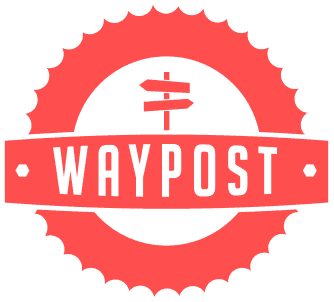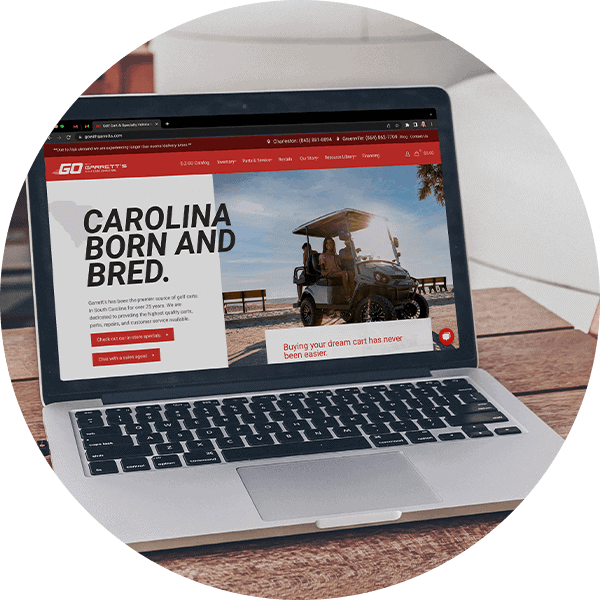TPM is the Carolinas’ largest 3D CAD provider.
Providing cutting-edge solutions to the engineering and design community for the past 40 years.
TPM, Inc. is a leading technology company headquartered in Greenville, South Carolina. They serve more than 3,000 customers across the Southeast each year and are committed to offering their clients the best:
- 3D Design Software
- 3D Printing and Scanning Options
- Data and Document Management Solutions
- Large-Format Graphics
- Wide-Format Plotters and Office Equipment
- Reprographics
TPM is one company with five unique divisions. Because of their size and diversity, TPM came to us with an already complex marketing machine running full-steam, albeit not as well as they would have liked.
The immediate issues we had to deal with were a massive website that wasn't converting, a marketing platform that was being used ineffectively, and mixed messages coming from multiple agencies TPM had hired to handle different parts of their marketing efforts.
400-page Website NOT Converting
TPM’s existing website was a 400-page supermassive black hole. Viewers were going in, but not much was coming out.
Ineffective Marketing Platform
TPM’s existing marketing platform was under-managed, but the bigger problem was that it wasn’t very well supported by the provider.
Mixed Messages
Waypost was the third company invited to the table, and there were a lot of mixed messages undermining TPM’s trust in any one party.


The 400-page Elephant in the Room
Talking about the TPM website with their marketing team was like pressing on a fresh bruise. The site wasn’t old, but it had never been effective at converting visitors into leads. In fact, a significant portion of TPM’s support calls at the time were with regards to the website. Not good.
Admittedly, the site was extremely difficult to navigate with multiple menus that changed constantly, hidden pages, and confusing mobile navigation. In addition, the sheer amount of content was overwhelming, both for the user and for TPM.
Considering the time and effort that they had just put into a site rebuild, our recommendation that they kill the beast and start over was met with a certain amount of resistance. That was a difficult situation for us, because TPM was desperately looking for someone to trust, and we wanted to be able to offer a quick win. Rebuilding the website meant pausing everything else for 3 months, but we insisted that the existing usability issues couldn’t be ignored or fixed with half-measures.
A Proper Marketing Platform, and a Crack Team to Manage It
TPM initially hired us to produce content for their in-house marketing team to manage. After only a few months it became clear that their existing marketing platform was inadequate to properly manage their complex needs, and their in-house team was in need of help in more areas than just content creation.
We had been proposing a switch to HubSpot for some time, but it was the decision to rebuild the website that finally enabled us to make the switch. Rebuilding the site meant that marketing had to pause for a few months – a perfect window of opportunity to onboard, retrain, and integrate TPM’s existing CRM. The result would be that the new website could launch in tandem with the switch to HubSpot.
Once on the new platform, TPM began relying on us more to manage the content that we were already producing.
Downsizing the Kitchen Staff
When we initially came to the table with TPM, we were one of three parties in addition to TPM’s in-house team. Also represented were the web development company currently supporting TPM’s website and a marketing consultant. As the discussions progressed, it became clear that we had far too many cooks in the kitchen.
Ultimately this issue was resolved through trust-building. We continued to show TPM that we were providing the same direction as the consultant, while simultaneously following it up with action and results, and as that trust went deeper, the consultant became redundant.
As our partnership with TPM continues to develop we have enjoyed seeing that trust relationship continue to grow. The result is a clear direction, shorter deliberation times, and faster, more significant results.
increase in form submissions after site rebuild
TPM was struggling to engage prospects and customers on their existing website. The results from the new site were immediate and extremely significant.
decrease in bounce rate in first 6 months after site launch
Pages per session improved by 14%, which is especially significant considering we reduced the total number of pages on the site by 80%.
increase in total traffic year over year
TPM’s traffic is significantly increased across the board, with the most impressive increase belonging to social media traffic (345%).
One of the most important components of any successful organization is the group of teams and partners that it chooses to work with. TPM, while in business for over 40 years, has been experiencing exponential growth over the past few years and setting a vision going forward to continue that growth. Our digital presence in today’s environment is one of the most important aspects of our branding and marketing efforts. We have worked with a tremendous number of partners, consultants, and experts over the years in the digital space but no one as capable and easy to work with as Waypost.
While evaluating potential vendors, Waypost stood out for their intense focus on inbound marketing activities, which is an area where TPM was weak. In addition to their expertise, Waypost also was very collaborative in the process and worked to understand the inner workings of our business so that it could be properly translated to our new website.
From 400 pages to less than 80
Cutting 80% of TPM’s website content yielded the most significant positive result from the website redesign.
Less is more. Starting with a clean slate, we turned our focus away from TPM’s massive offering of products, services, and support and concentrated instead on understanding their customers’ needs. It turned out that nobody was interested in the technical specifications of every plotter in TPM’s catalog. As we built a new site plan, we only included those pages that truly served the customer first, and TPM’s vision second. The result was a slim 80 page sitemap with clear and concise navigation and effective sales funnels for all five TPM divisions.
Our expectation was an immediate increase in conversions, decrease in bounce rate, and increase in average time on page. We also expected a drop-off of support calls regarding the website. We were not disappointed on any count, but the most impressive result was the increase in conversions based on form submissions. In the first 2 days after the new site launched, we generated twice as many conversions as the old site had generated in the previous month.
What We Learned

Sam Gerdt
Director of Business Technology
The first several months with TPM was a lesson in the importance of having an established feedback loop and actually staying tuned in. It’s always interesting to pay attention to the subtext in meetings and in the office when we begin working with a new client, because most of the time the obvious problems aren’t the ones we’re talking about – they’re the ones we’re muttering under our breath about, or sighing about, or rolling our eyes at. Just like we have strong reactions to real, physical pain, we also have these observable responses to mental or emotional frustrations.
As I observed that first several months, it was apparent that there was a battle being fought between the frustration the website was causing everybody, and the perceived frustration and cost of starting over. It’s hard to broach that topic when you can see how raw the response is, and, indeed, it was hard to have those conversations with TPM because we knew that this wasn’t an old site, and we knew how much time they had invested in that content; but we also knew that the website was the single biggest roadblock to their success with inbound marketing, and we knew that it wasn’t just a pain being felt within their offices and our offices – it was a pain that was being passed on to their customers and prospects.
Through the first months with TPM, I learned again the value of starting your marketing from a position of usability. When you take stock of what you have and exercise some honesty with yourself about the actual value to your ideal customers, it can be painful to realize that some things you’ve truly invested yourself into may not be worth holding on to – but the payoff for letting go and doing everything you can to do it right can be huge.








